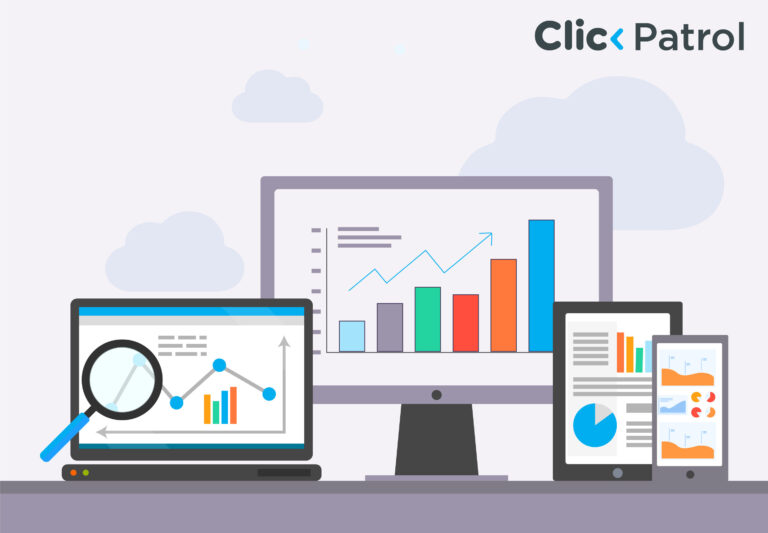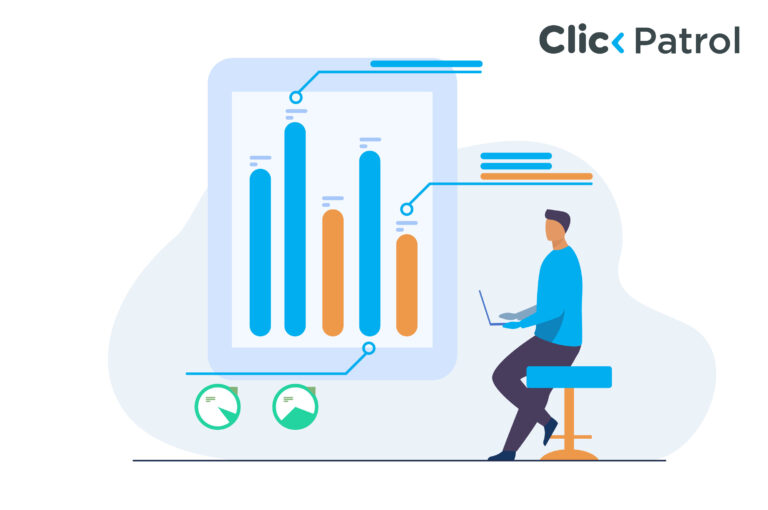
Pay-per-click Campaigns: How To Succeed In PPC
Abisola Tanzako | Feb 07, 2024

Table of Contents
- 14 Steps to help you succeed in PPC
- 1. Establish Your Goals
- 2. Establish a Budget
- 3. Identify Who Your Target Market Is
- 4. Determine Important Keywords
- 5. Use Negative Keywords
- 6. Recognise Competitive Marketing
- 7. Make Your Landing Page Better
- 8. Track Conversions
- 9. Concentrate on the Channels that Work
- 11. Gain Knowledge From Competitors
- 12. Establish Bids for Devices
- 13. Pick the Appropriate Reporting tool
- 14. Don’t Stop After You Start PPC; protect your campaigns
- Conclusion
How easy is it to succeed in PPC?
Advertisers use Pay-per-click (PPC) to pay for their ads each time they are clicked. When a user’s search parameters match the keywords associated with advertising, the advertisement displays. These are search engine result page (SERP) advertisements.
A PPC campaign may have several objectives, such as increasing website traffic or prompting an online visitor to click the ad and convert to a lead as a buyer.
The advertising platform uses a variety of criteria, including ad quality and extensions, in addition to the bid price, to decide which ad is most suited for the top spot. So, setting up a PPC campaign is a process. It can be measured and monitored.
By examining several metrics, like impressions, clicks, conversions, and so on, as well as the performance of your advertisement across various devices and places, the effectiveness of your campaign can be assessed.
Google Ads is relatively easy to start, but mastering the platform is much more difficult. In this article, we’ll explain how to prepare for a PPC ad campaign, giving you the blueprint for success with paid advertising.
14 Steps to help you succeed in PPC
You should take these essential actions to set up a PPC campaign. While some are more straightforward than others, each is necessary to maximize the benefits of Google ads.
1. Establish Your Goals
Your strategy is aimless without a destination. Clearly state your goals for this advertising campaign at the outset. Do you wish to increase website traffic? Do you wish to increase email sign-ups? Do you want to have more clients? Before continuing, identify your company’s goals.
2. Establish a Budget
You must be ready to pay for each click. Unless you have an enormous budget, you should constantly aim to maximize your marketing to prevent wasting money. When determining your budget, consider the keywords, your competition, and your industry.
3. Identify Who Your Target Market Is
To whom are you marketing? Are you aware of their wants and problems? It is possible to target different audience groups with various campaigns. You may, for instance, advertise different products for men and women. However, if you understand your market, both will succeed correctly.
To begin, develop thorough buyer profiles that will direct your marketing initiatives. You can learn more about the individuals you want to help by exploring social media sites, forums, and specialised groups in-depth. You can then develop these personas to have a more precise understanding of your target market.
4. Determine Important Keywords
Choosing keywords that are important to your business and your target audience’s needs is essential to your campaign’s success. If you were one of them, what search phrases would you use to discover the answers you provide?
5. Use Negative Keywords
Incorporate negative keywords into your campaign. This will ensure that potential patronizers see your ad solely by eliminating any unqualified leads who use similar but unrelated search terms.
6. Recognise Competitive Marketing
Some organizations choose to be ambiguous to avoid unintentionally endorsing their competitors, while others acknowledge other brands by name. A thorough look at your target market will enable you to position your brand advantageously against the competition, increasing the appeal of your advertisements to potential customers.
7. Make Your Landing Page Better
Gaining the click is the first step, but users will only stay around for a short time if they get on a landing page that has nothing to do with the ad or their needs. Your landing page’s conversion rate optimisation (CRO) must be a top priority. This can be accomplished in several ways:
- Select terms with a high conversion rate.
- Add eye-catching visuals
- Make use of powerful language and an effective call to action (CTA)
With an optimized landing page, you can help convert leads into revenue by raising conversions and clickthrough rates.
8. Track Conversions
Conversion monitoring is essential, regardless of size—whether you are a large corporation with substantial resources or a one-person show with a tight budget. You can install trackers on your website to find out if the leads, subscriptions, and sales your advertising generates are actual success indicators.
Finding the best keywords and advertisements will enable you to reduce your losses and concentrate your efforts on the areas that are producing results. Regular analysis can help you do this.
9. Concentrate on the Channels that Work
Investing in social media advertising, such as Facebook ads and promotions on LinkedIn or Twitter, might be a better option for specific businesses. Others could discover their performance on partner sites or search engine results is better. These may operate on a CPM (cost per thousand impressions) or PPC basis.
Examine your early-period results and make any necessary adjustments. You can balance both successfully. But feel free to concentrate your efforts on the most profitable avenue.
10. Display Network vs. Search Network
You have multiple options for running ads on Google’s Search Network:
- Organic search results
- On Google Shopping, Maps, and so forth.
- On Google’s search partner websites
There are specific differences with the display network. It aids in reaching consumers as they are browsing your brand with any app, website, or device. Decide which path best suits your needs and objectives over time.
11. Gain Knowledge From Competitors
No business exists in a vacuum. Try to get knowledge from your competitors instead of disregarding them. You can gain knowledge from a thorough competitor study that will help you develop your tactics and plans.
You will discover methods to optimize your conversion funnel when you have a deeper comprehension of their offers, landing pages, keywords, and advertisements, among other things.
12. Establish Bids for Devices
Even if most people already buy on their smartphones, many still like desktop computers. People frequently use mobile devices for browsing but use desktop or tablet computers to finish purchases.
If you want to change the bid for each device separately, you may do so at the ad group and campaign levels. Making these choices will be easier if you know who your audience is.
13. Pick the Appropriate Reporting tool
It is never a “set and forget” activity to run paid advertising. To determine if your advertisements are effective, you should closely monitor each campaign and examine the essential indicators.
14. Don’t Stop After You Start PPC; protect your campaigns
You must do more than just put up your campaign and then forget about them. It would be best if you kept an eye on your ads and protected them from non-human traffic and invalid clicks where necessary. You will be able to see both the shortcomings and potential later. ClickPatrol offers a superior algorithm for the comprehensive protection of your campaigns for bots and other non-converting clicks.
Conclusion
Numerous factors in your market will shift, including your ad text, keywords, competitive analysis, and client interests. Proactive marketers have a higher chance of success when using PPC advertising
A great marketing campaign needs to be established with dedication and persistent effort. Regardless of the kind of business you are operating, taking into account the tips mentioned above can significantly aid in creating a successful marketing plan.

